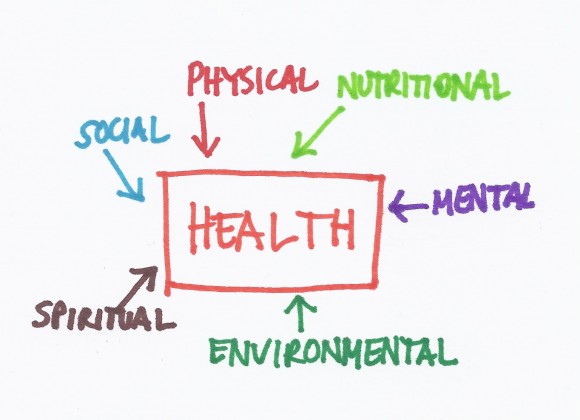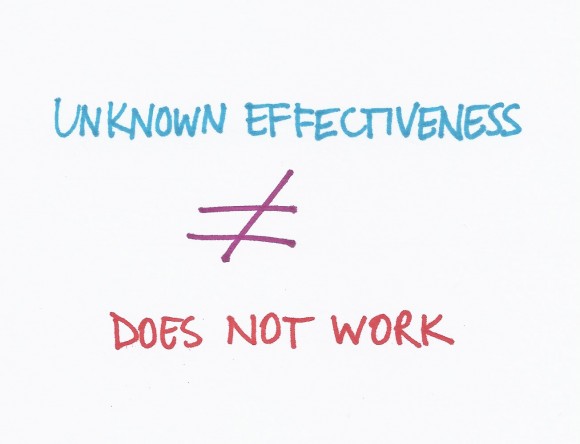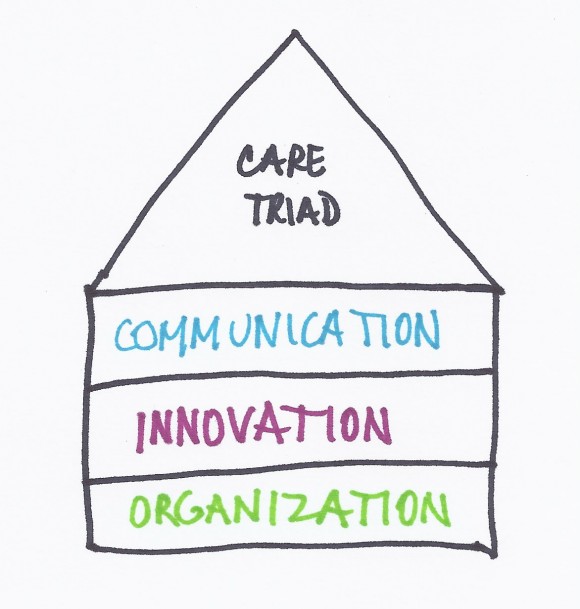Month: February 2013
Think before you eat
We may be eating in unhealthy ways without realizing it. Even healthy foods can lead to problems in certain people – for example dairy products in people who are allergic to them or wheat in people who have celiac disease. But even if food does not cause a bad reaction in us, there is research evidence that we are not in as much control of what we are eating as we think we are.
The first problem is that we often eat without thinking. Dr. Brian Wansink at Cornell University has done some fascinating experiments (which he writes about in his book, Mindless Eating) that look at why we eat more than we think. In one experiment he had people eat bowls of soup while he watched them using hidden cameras. For some people, more soup was piped into the bowl (without them knowing it) as they were eating – it was a bottomless bowl. These people ate more soup than those who had a regular bowl. Similarly, he has shown in experiments that people will eat less food if they use a smaller plate. In yet another experiment, he went to a movie theatre where a first-run movie was playing just after lunch on a Saturday. He prepared popcorn in advance and made sure it was really stale but still safe to eat. He offered each person who bought a ticket a free soft drink and a bucket of popcorn (some buckets were medium in size and some were large but all were too big to finish). People who got the large containers, ate more popcorn (even though it was stale). He surveyed people when they were leaving the theatre and most people who had the large buckets said that they would not be fooled into eating more popcorn by a larger bucket.
Does food cause inflammation?
I am fascinated by food – what makes us eat the food we eat and how it affects our health. I’m especially interested when there is evidence to support the ideas.
As the American diet has changed in the past few decades, we have been gaining weight. It is also true that we are seeing more diseases – especially those that have an inflammatory component. Inflammation is when the body responds to things that shouldn’t be there – like an infection or a chemical – and the body sends cells to the area to fight them off. This can lead to pain and swelling, among other things. Some diseases caused by inflammation have “itis” at the end – arthritis, colitis, bronchitis, etc.
Is it possible that the food we eat is causing some of these diseases that are due to inflammation?
What’s the alternative?
A recent blog post on The Health Care Blog entitled Choosing Alternative Medicine raises some really interesting issues. The author, James Salwitz, MD complains that patients are turning to complementary and alternative medicine (CAM) therapies when they could be cured by “conventional” therapy. I think the real problem is that people are being treated with therapies that have not been proven to work when there are other more effective treatments available. Patients need to be given enough information about the research evidence to make informed choices. After learning about the evidence, if they choose a therapy that has not been proven to work when there are more effective treatments available, I would consider that an informed decision.
Rather than saying some medicines are “alternative” and some are “traditional” we should look at all treatments for which there is evidence to treat a particular condition. If there is evidence that an herbal remedy or vitamin works even if it is not as good as the evidence for a drug, patients should be able to make the right choice for them based on the evidence. Doctors need to be open to thinking about CAM therapies as treatment options if there is evidence to support their use.
The whole patient
 During my internship, I had an 18 year old patient with diabetes who I followed in my outpatient clinic (let’s call him Sam). He was first diagnosed at age 3 and had many hospitalizations thereafter for his poorly controlled diabetes. On one of these admissions, he arrived in the emergency room unconscious and near death because he hadn’t been taking his insulin. I happened to be on-call and stayed up with him all night managing his care. This required drawing blood tests every hour, adjusting medications, giving nutrients and fluids, etc. In the morning I had to present the situation to the physician in charge of my team at morning rounds. I proudly discussed how I had taken care of all of Sam’s problems throughout the night and how well he now looked. The senior physician asked me and the other interns and residents on our the team what the diagnosis was in this patient. We all looked at him like he was crazy since we had been talking about Sam’s diabetic emergency for the past 15 minutes. Then he told us that he thought the diagnosis was “communication failure”. Then we were convinced that he was crazy.
During my internship, I had an 18 year old patient with diabetes who I followed in my outpatient clinic (let’s call him Sam). He was first diagnosed at age 3 and had many hospitalizations thereafter for his poorly controlled diabetes. On one of these admissions, he arrived in the emergency room unconscious and near death because he hadn’t been taking his insulin. I happened to be on-call and stayed up with him all night managing his care. This required drawing blood tests every hour, adjusting medications, giving nutrients and fluids, etc. In the morning I had to present the situation to the physician in charge of my team at morning rounds. I proudly discussed how I had taken care of all of Sam’s problems throughout the night and how well he now looked. The senior physician asked me and the other interns and residents on our the team what the diagnosis was in this patient. We all looked at him like he was crazy since we had been talking about Sam’s diabetic emergency for the past 15 minutes. Then he told us that he thought the diagnosis was “communication failure”. Then we were convinced that he was crazy.
New types of evidence
It can be difficult to figure out how to use the results of research studies (randomized controlled trials or RCTs) to make a healthcare decision. There are many other problems with RCTs that may be less obvious.
First, to perform an RCT can take years – you need to get approval from the hospital where you are performing the study because you are doing research on humans. Then you need to get funding for the study so you may need to apply for some grants. After the study is completed, the results need to be analyzed; and then a paper needs to be written and submitted for publication to a journal. It could take years from the time the results are known until the time they are published.
Many commonly used treatments may not work
 A Washington Post WonkBlog piece entitled “Surprise! We don’t know if half our medical treatments work” got a lot of attention in social media circles. The title is a bit misleading but the concepts are really important. First, let me say that I worked at the BMJ for 8 years and was involved with the Clinical Evidence publication that is discussed in the blog so I may be a little biased!
A Washington Post WonkBlog piece entitled “Surprise! We don’t know if half our medical treatments work” got a lot of attention in social media circles. The title is a bit misleading but the concepts are really important. First, let me say that I worked at the BMJ for 8 years and was involved with the Clinical Evidence publication that is discussed in the blog so I may be a little biased!
The way doctors determine if medical treatments work is to perform research studies called randomized controlled trials (RCTs). These are studies where half the patients get a treatment and half get a placebo (or inactive treatment like a sugar pill) but the patients and the researchers do not know who is getting what. After a period of time (could be years), the researchers look at the results and figure out which group did better.
Communication, Innovation and Organization
 The Care Triad doesn’t really work without three important foundations – communication, innovation and organization.
The Care Triad doesn’t really work without three important foundations – communication, innovation and organization.
Communication requires that all members of the healthcare team understand that the patient is the most important person on the team. Patients should be spoken to in a respectful way starting with the person who sits at the welcome desk. Doctors need to learn to translate complicated medical information into ways that patients can understand it and patients need to learn to ask questions when they don’t understand what the doctor is saying. Doctors (and other members of the healthcare team), patients and family members also need to learn to talk openly about the end of life. Patients may also find it helpful to communicate with each other in online communities. Both doctors and patients need to learn to use social media to help themselves and each other, recognizing the power of personal experiences.